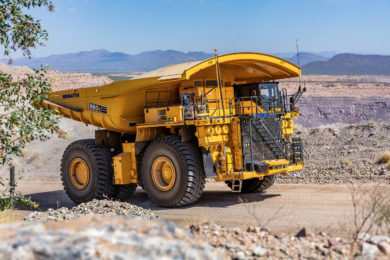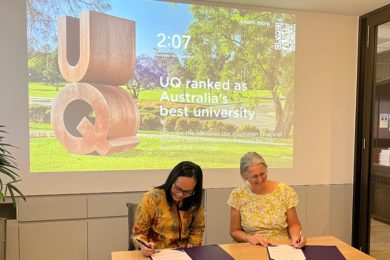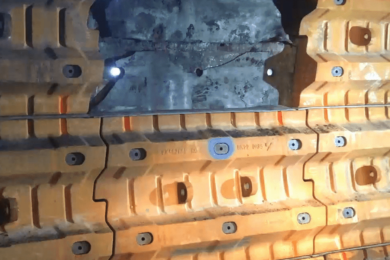In its just released six month report to September 2020, Komatsu Ltd said consolidated net sales across al divisions totalled JPY957.7 billion, down 21.1% from the corresponding period a year ago. In the construction, mining and utility equipment business, demand fell, centreing on North America, Europe & CIS and Asia, as particularly affected by the coronavirus (COVID-19) pandemic. As a result, sales declined from the corresponding period a year ago.
With respect to profits for the six month period, operating income dropped by 57.5% from the corresponding period a year ago, to JPY60.3 billion. “This was mainly due to reduced sales volume, and a change in the geographic composition of sales in the construction, mining and utility equipment business, while Komatsu worked to reduce fixed costs.” Positive markets for mining were given as gold in CIS and iron ore in Asia and Oceania with other markets cited as flat or sluggish or having declined.
Sales of the construction, mining and utility equipment business decreased by 21.2% from the corresponding period a year ago, to JPY876.5 billion. Segment profit fell by 59.8% to JPY52.2 billion. “With respect to value creation by means of innovation, one of the three pillars of growth strategies in the mid-term management plan, Komatsu has worked to strengthen the Autonomous Haulage System (AHS) as an effort of focus, increasing the total number of AHS trucks in operation to over 260 units as of September 30, 2020.”
In addition to improving the safety and optimising operations at customers’ mines, Komatsu says it will also continue to promote mining automation as a solution to help reduce risks, such as lowered productivity, brought about by the coronavirus pandemic. The company also mentions in the accompanying slides “the launch of remote controlled loaders and development of mining platforms.” No further details were given but it is assumed this refers to teleremote mining shovels.
In the six-month period October 1, 2020-March 31, 2021, Komatsu assumes that demand will remain steady in China and will get back on a recovery track in North America, Japan and some other regions. “While Komatsu will continue to invest in growth areas, an effort of focus in the mid-term management plan, it can also look forward to benefits of reduced fixed costs by having reassessed the priorities of projects and improved operational efficiency.”
Komatsu Ltd and its consolidated subsidiaries are engaged in a three-year mid-term management plan (FY2019-2021), DANTOTSU Value – FORWARD Together for Sustainable Growth for its 100th anniversary in 2021 and beyond. Under the mid-term management plan, launched in April 2019, Komatsu is upholding three pillars of growth strategies, namely:
- Value creation by means of innovation
- Growth strategies based on business reforms
- Structural reforms for growth
While economic activities remain sluggish, due to COVID-19, Komatsu “will continue to make efforts for sustainable growth through a positive cycle of improving earnings and solving ESG issues into the future.”
With regard to growth strategies based on business reforms, Komatsu has worked to integrate the brands of mining products made by Komatsu Mining Corp in order to further strengthen its mining equipment business. Earlier this year the company said it would retain its iconic P&H and Joy brands for the products longest associated with those names: P&H for its electric rope shovels, hybrid shovels, draglines and 320XPC blasthole drill; and Joy for longwall systems, and room and pillar equipment. But it has rebranded as Komatsu all surface wheel loaders, new blasthole drills and all underground hard rock equipment, with colour changes where applicable such as the hard rock machines going from Joy orange to Komatsu yellow.
Komatsu closed by saying it has also continued to strengthen its aftermarket efforts in Strategic Markets. “As a main effort, Komatsu offers a new service program with a warranty period which is longer than that of extended conventional programs. In September this year, Komatsu embarked on this new program in India, following China, Thailand, and Indonesia.”









